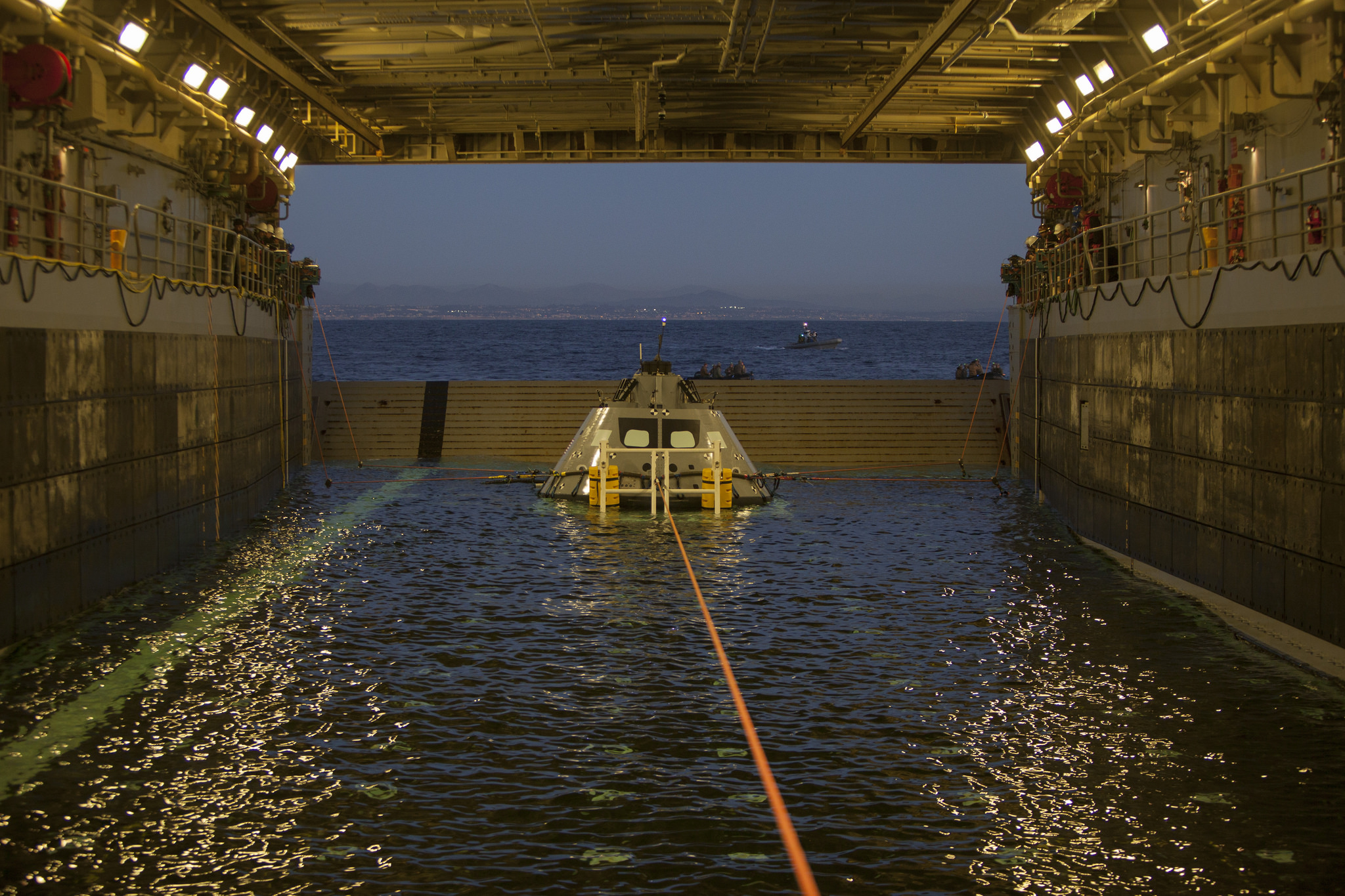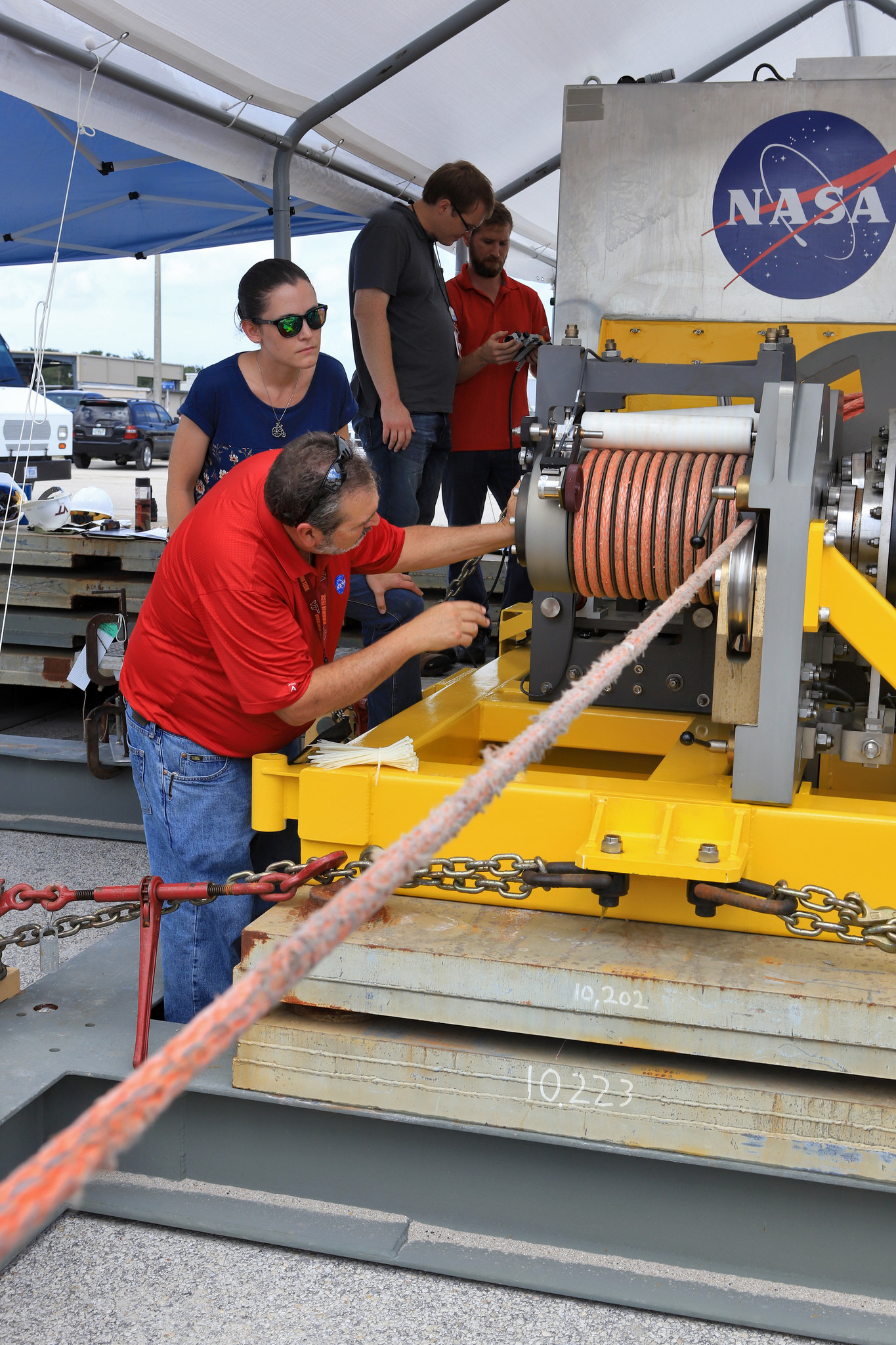
By Linda Herridge
NASA’s John F. Kennedy Space Center
NASA and the U.S. Navy are preparing to head out to sea for the seventh in a series of tests to verify and validate procedures and hardware that will be used to recover the Orion spacecraft after it splashes down in the Pacific Ocean following deep space exploration missions.
After traveling through space at 25,000 miles per hour, the Orion spacecraft will slow to 300 mph after it passes through the Earth’s atmosphere. The spacecraft then slows down to 20 mph before it safely splashes down in the Pacific Ocean. That’s when Exploration Ground Systems (EGS), managed at Kennedy Space Center in Florida, comes in.
“We have an amazing team of people,” said Melissa Jones, Launch and Recovery director. In addition to NASA and the Navy, the team also includes Lockheed Martin, the Orion prime contractor; EGS contractor Jacobs, and the U.S. Air Force’s 45th Space Wing Detachment 3.
During this test, which will take place in late October and early November, the team will be stationed on a U.S. Navy ship off the coast of California. They will release a test version of Orion in various sea states, in day and night time, and then retrieve it and secure it on a structure called the Orion Recovery Cradle Assembly (ORCA) in the flooded well deck of the ship.

“Every recovery test allows the team to gather important data used to improve recovery procedures and hardware,” Jones said. “The primary objective of this test is to prove the recovery equipment works as expected, and if it doesn’t, they have time to fix it before actual splashdown in a couple of years.”
During the sixth test in January 2018, a couple of the tending lines snapped during Orion retrieval. Analysis afterward revealed that the attachment hardware on some of the tending lines, called tow pin inserts, did not perform as expected. New hardware was designed by Kennedy’s Engineering team, and a ball bearing was added to each tow cleat so they can pivot and handle the directional forces during Orion retrieval.
“The concept was fairly easy, but implementation was a huge challenge because the hardware interface didn’t allow us much room to fit anything else,” said Jeremy Parr, lead design engineer for Landing and Recovery. “The new design has been through several extensive design reviews and testing. We are excited to test it on this test.”
Teams also will evaluate the crew module recovery equipment. This includes the inflatable stabilization collar that U.S. Navy divers will place around Orion at the water line, which also serves as a work area for divers. An inflatable covered life raft, called the “front porch,” will be attached to Orion. It is large enough to serve as an emergency life raft for astronauts. Divers also will attach another collar, called a Pony Collar, around Orion about three feet above the water line. The collar will be used for tending line attachment for recovery and serves as a secondary recovery method in contingency situations.
There are two more recovery tests planned for this series. Prior to each test, the Navy dive teams train and perform additional preparation activities at the Neutral Buoyancy Laboratory (NBL) at the agency’s Johnson Space Center in Houston. The NBL is a large pool where astronauts train for spacewalks and engineers refine procedures.
“I look forward to seeing the months of hard work and planning be executed,” said Slade Peters, assistant NASA recovery director.

























